|
Books Should Be Free Loyal Books Free Public Domain Audiobooks & eBook Downloads |
|
|
Books Should Be Free Loyal Books Free Public Domain Audiobooks & eBook Downloads |
|
Non-fiction |
|---|
|
Book type:
Sort by:
View by:
|
By: David Hume | |
|---|---|
 History of England from the Invasion of Julius Caesar to the Revolution of 1688, Volume 1A
History of England from the Invasion of Julius Caesar to the Revolution of 1688, Volume 1A
David Hume is one of the great philosophers of the Western intellectual tradition. His philosophical writings earned him lasting fame and renown; his historical writing earned his bread and butter. His "The History of England from the Invasion of Julius Caesar to the Revolution of 1688", published between 1754 and 1764, was immensely popular and Hume wrote that "the copy-money given me by the booksellers much exceeded any thing formerly known in England; I was become not only independent, but opulent... | |
By: David Marshall Brooks (1902-1994) | |
|---|---|
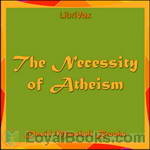 The Necessity of Atheism
The Necessity of Atheism
Plain speaking is necessary in any discussion of religion, for if the freethinker attacks the religious dogmas with hesitation, the orthodox believer assumes that it is with regret that the freethinker would remove the crutch that supports the orthodox. And all religious beliefs are "crutches" hindering the free locomotive efforts of an advancing humanity. There are no problems related to human progress and happiness in this age which any theology can solve, and which the teachings of freethought cannot do better and without the aid of encumbrances. | |
By: David Nunes Carvalho (1848-1925) | |
|---|---|
 Forty Centuries of Inkor, a chronological narrative concerning ink and its backgrounds
Forty Centuries of Inkor, a chronological narrative concerning ink and its backgrounds
| |
By: David Starr Jordan (1851-1931) | |
|---|---|
 Life's Enthusiasms
Life's Enthusiasms
The words in this essay on positive thought sing like those in Whitman's "Leaves of Grass." The author praises joyous living and recommends certain routes to its attainment. He explores schooling (public secondary and the university), travel, and the study of nature as ways to stay buoyant during life's trials. He also praises the power of the arts (literature, music, painting, sculpture) to keep spirits soaring. | |
By: Delmer Eugene Croft | |
|---|---|
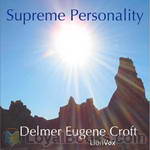 Supreme Personality
Supreme Personality
Life is self-realization. Every birth is divine. We are born anew every morning. My wish is that you may catch the gleam, be freed from limitations and enter upon your boundless possibilities. To bring you into the throne-room of your being, that you may awaken in self-realization, is why I have prepared this course of lessons. Should you give five minutes a day to them, in a year you will know the joy there is in Life, in Power, and in Service. (from the text) | |
By: Derek J. de Solla (Derek John de Solla) Price (1922-1983) | |
|---|---|
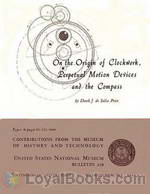 On the Origin of Clockwork, Perpetual Motion Devices, and the Compass
On the Origin of Clockwork, Perpetual Motion Devices, and the Compass
| |
By: Desiderius Erasmus (1466/69-1536) | |
|---|---|
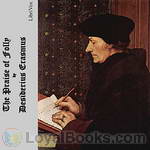 The Praise of Folly
The Praise of Folly
The Praise of Folly (Greek title: Morias Enkomion (Μωρίας Εγκώμιον), Latin: Stultitiae Laus, sometimes translated as In Praise of Folly, Dutch title: Lof der Zotheid) is a satirical essay written in 1509 by Desiderius Erasmus of Rotterdam (1466/69-1536). It is considered one of the most influential works of literature in Western civilization and one of the catalysts of the Protestant Reformation.It starts off with a satirical learned encomium after the manner of the Greek satirist... | |
 The Education of Children
The Education of Children
| |
By: Digital Equipment Corporation | |
|---|---|
 Preliminary Specifications: Programmed Data Processor Model Three (PDP-3) October, 1960
Preliminary Specifications: Programmed Data Processor Model Three (PDP-3) October, 1960
| |
By: Dillon Wallace (1863-1939) | |
|---|---|
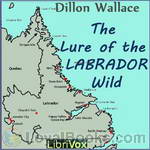 The Lure of the Labrador Wild
The Lure of the Labrador Wild
The Lure Of The Labrador Wild is a account of a expedition by Leonidas Hubbard, an adventurer and journalist to canoe the system Naskaupi River - Lake Michikamau in Labrador and George River in Quebec. His companions on this journey were his friend, New York lawyer Dillon Wallace and an Indian guide from Missannabie, George Elson. From the start, the expedition was beset with mistakes and problems. Instead of ascending the Naskaupi River, by mistake they followed the shallow Susan Brook. After hard long portaging and almost reaching Lake Michikamau, with food supplies running out, on September 15 at Windbound lake, they decided to turn back... | |
By: Dion Clayton Calthrop (1878-1937) | |
|---|---|
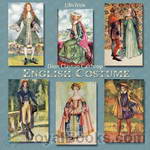 English Costume
English Costume
The world, if we choose to see it so, is a complicated picture of people dressing and undressing. The history of the world is composed of the chat of a little band of tailors seated cross-legged on their boards; they gossip across the centuries, feeling, as they should, very busy and important. As you will see, I have devoted myself entirely to civil costume—that is, the clothes a man or a woman would wear from choice, and not by reason of an appointment to some ecclesiastical post, or to a military calling, or to the Bar, or the Bench. Such clothes are but symbols of their trades and professions, and have been dealt with by persons who specialize in those professions. | |
By: Doane Robinson (1856-1946) | |
|---|---|
 Sioux Indian Courts An address delivered by Doane Robinson before the South Dakota Bar Association, at Pierre, South Dakota, January 21, 1909
Sioux Indian Courts An address delivered by Doane Robinson before the South Dakota Bar Association, at Pierre, South Dakota, January 21, 1909
| |
By: Don C. (Don Carlos) Seitz (1862-1935) | |
|---|---|
 The Tryal of William Penn and William Mead for Causing a Tumult at the Sessions Held at the Old Bailey in London the 1st, 3d, 4th, and 5th of September 1670
The Tryal of William Penn and William Mead for Causing a Tumult at the Sessions Held at the Old Bailey in London the 1st, 3d, 4th, and 5th of September 1670
| |
By: Donald Alexander Mackenzie (1873-1936) | |
|---|---|
 Myths and Legends: Myths of Babylonia and Assyria
Myths and Legends: Myths of Babylonia and Assyria
Donald Alexander Mackenzie was a Scottish journalist and prolific writer on religion, mythology and anthropology in the early 20th century. His works included Indian Myth and Legend, Celtic Folklore and Myths of China and Japan.As well as writing books, articles and poems, he often gave lectures, and also broadcast talks on Celtic mythology.This volume deals with the myths and legends of Babylonia and Assyria, and as these reflect the civilization in which they developed, a historical narrative has been provided, beginning with the early Sumerian Age and concluding with the periods of the Persian and Grecian Empires... | |
By: Donald Ogden Stewart | |
|---|---|
 Perfect Behavior
Perfect Behavior
A humorous guide to manners and etiquette for ladies and gentlemen in a social "crises," published in 1922. (Introduction by Samanem) | |
By: Dora C. C. L. (Dora Cathrine Cristine Liebel) Roper (1873-) | |
|---|---|
 Food for the Traveler What to Eat and Why
Food for the Traveler What to Eat and Why
| |
By: Doris Stevens (1892-1963) | |
|---|---|
 Jailed for Freedom
Jailed for Freedom
A first-hand account of the 1913-1919 campaign of American suffragists, detailing their treatment at the hands of the courts, and the true conditions of their incarceration. | |
By: Dorothy Osborne (1627-1695) | |
|---|---|
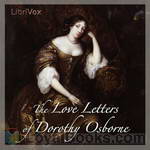 Love Letters of Dorothy Osborne
Love Letters of Dorothy Osborne
A lively, interesting and important collection of 17th century love-letters written by an English lady, against the background of the Civil War and the Restoration | |
By: Dorothy Quigley | |
|---|---|
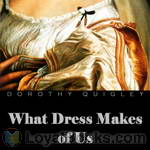 What Dress Makes of Us
What Dress Makes of Us
A wickedly funny book of advice on women’s dress. However old, fat or plain you are, Dorothy Quigley will tell you what not to wear. | |
By: Dudley Landon Vaill (1873-?) | |
|---|---|
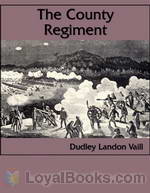 The County Regiment
The County Regiment
A sketch of the second regiment of Connecticut volunteer heavy artillery, originally the Nineteenth Volunteer Infantry, in the Civil War. | |
By: Duncan McGregor (1787-1881) | |
|---|---|
 The Loss of the Kent, East Indiaman, in the Bay of Biscay Narrated in a Letter to a Friend
The Loss of the Kent, East Indiaman, in the Bay of Biscay Narrated in a Letter to a Friend
| |
By: E. Gordon Browne (1871-1926) | |
|---|---|
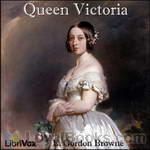 Queen Victoria
Queen Victoria
This book is about the life of Queen Victoria (1819 to 1901). All nine of her children married into the royal houses of Europe. She became the longest reigning monarch and more. This book is a fascinating read about the woman behind the British Empire. | |
By: E. R. Billings | |
|---|---|
 Tobacco; Its History, Varieties, Culture, Manufacture and Commerce
Tobacco; Its History, Varieties, Culture, Manufacture and Commerce
| |
By: Earl W. Phelan (1900-1993) | |
|---|---|
 Radioisotopes in Medicine
Radioisotopes in Medicine
Radioisotopes in Medicine is an educational booklet published in 1966 as part of the Understanding the Atom series by the United States Atomic Energy Commission. Written in clear language for the general public, the booklet covers the diagnostic and therapeutic uses of radioactive isotopes like technetium 99m and iodine 131. | |
By: Eatmor Cranberries | |
|---|---|
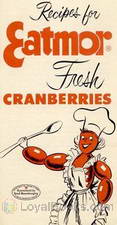 Recipes for Eatmor Fresh Cranberries
Recipes for Eatmor Fresh Cranberries
| |
By: Eben E. (Eben Eugene) Rexford (1848-1916) | |
|---|---|
 Amateur Gardencraft A Book for the Home-Maker and Garden Lover
Amateur Gardencraft A Book for the Home-Maker and Garden Lover
| |
By: Edgar Thurston (1855-1935) | |
|---|---|
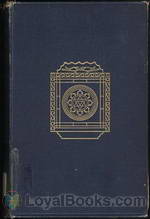 Omens and Superstitions of Southern India
Omens and Superstitions of Southern India
This book deals mainly with some aspects of what may be termed the psychical life of the inhabitants of the Madras Presidency, and the Native States of Travancore and Cochin. | |
By: Edith Birkhead (1889-1951) | |
|---|---|
 Tale of Terror: A Study of the Gothic Romance
Tale of Terror: A Study of the Gothic Romance
A seminal essay on the development of horror as a genre, highly influential on later writers. | |
By: Edith E. Wiggin | |
|---|---|
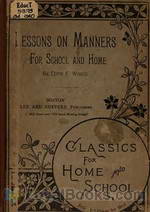 Lessons on Manners for Home and School Use
Lessons on Manners for Home and School Use
It is true that good manners, like good morals, are best taught by the teacher's example. It is also true that definite lessons, in which the subject can be considered in its appropriate divisions, are of no little value if we would have our children attain to "that finest of the fine arts, a beautiful behavior." (From the author's Introduction) | |
By: Edith Nesbit (1858-1924) | |
|---|---|
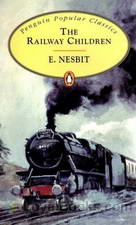 Railway Children
Railway Children
A thrilling spy story, a children's adventure, a charming portrait of early twentieth century life in London and the countryside and a heart warming family tale are all combined in this classic of children's literature The Railway Children by E Nesbit. The book has remained on the list of the best-loved children's books ever since it was first published as a serial story in The London Magazine in 1905. Later, it was published in book form and won acclaim from critics and readers across the world for its wonderful elements of character and plot... | |
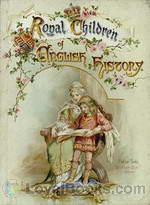 Royal Children of English History
Royal Children of English History
From the first chapter: “History is a story, a story of things that happened to real live people in our England years ago; and the things that are happening here and now, and that are put in the newspapers, will be history for little children one of these days. And the people you read about in history were real live people, who were good and bad, and glad and sorry, just as people are now-a-days.” E. Nesbit writes about some of the people behind the names, dates and battles of English History in this lovely book for older children. The original book contains some beautiful illustrations and you can see those by clicking the ‘Gutenberg’ link below. | |
By: Edith Thomas (1882-) | |
|---|---|
 Mary at the Farm and Book of Recipes Compiled during Her Visit among the "Pennsylvania Germans"
Mary at the Farm and Book of Recipes Compiled during Her Visit among the "Pennsylvania Germans"
| |
By: Edith Wharton (1862-1937) | |
|---|---|
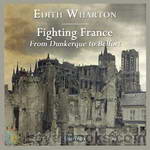 Fighting France, from Dunkerque to Belfort
Fighting France, from Dunkerque to Belfort
American novelist Edith Wharton was living in Paris when World War I broke out in 1914. She obtained permission to visit sites behind the lines, including hospitals, ravaged villages, and trenches. Fighting France records her travels along the front in 1914 and 1915, and celebrates the indomitable spirit of the French people. | |
By: editor: Frank Munsey | |
|---|---|
 The Scrap Book Sampler
The Scrap Book Sampler
18 works -- two non-fic articles & one short fiction or poetry each -- from issues March, April, May, June, July, & August 1906 of The Scrap Book, Volume 1, edited by Frank Munsey. As he states in the editorial of the April 1906 issue (Vol 1, Iss 2) this was a sort of supplement to the editor's popular monthly, Munsey's Magazine. The Scrap Book is very like an American version of Punch with many short, often humorous articles interspersed with at least one short story, some poetry, and several longer non-fic pieces. The Scrap Book ran up to 1922. | |
By: Edmond Halley (1656-1742) | |
|---|---|
 Miscellanea Curiosa, Vol 1
Miscellanea Curiosa, Vol 1
"The Royal Society is a Fellowship of many of the world's most eminent scientists and is the oldest scientific academy in continuous existence." . As scientists have explored the world around them, observed and tried to explain natural phenomena, they have been invited to present papers to the Royal Society. Edmond Halley was an eminent member of the society and gathered together some of the most interesting papers of his day. Today, we may see errors in the logic or calculations, based on current knowledge, but these papers are unedited and as presented at the time and show how scientific knowledge was expanding in the late seventeenth and early eighteenth centuries... | |
By: Edmond Holmes (1850-1936) | |
|---|---|
 What Is and What Might Be A Study of Education in General and Elementary Education in Particular
What Is and What Might Be A Study of Education in General and Elementary Education in Particular
| |
By: Edmund Beckett Grimthorpe (1816-1905) | |
|---|---|
 A Rudimentary Treatise on Clocks, Watches and Bells
A Rudimentary Treatise on Clocks, Watches and Bells
| |
By: Edmund G. (Edmund Gibson) Ross (1826-1907) | |
|---|---|
 History of the Impeachment of Andrew Johnson
History of the Impeachment of Andrew Johnson
| |
By: Edmund Gosse (1849-1928) | |
|---|---|
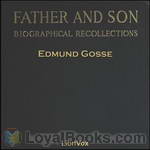 Father and Son
Father and Son
Father and Son (1907) is a memoir by poet and critic Edmund Gosse, which he subtitled “a study of two temperaments.” The book describes Edmund’s early years in an exceptionally devout Plymouth Brethren home. His mother, who dies early and painfully of breast cancer, is a writer of Christian tracts. His father, Philip Henry Gosse, is an influential, though largely self-taught, invertebrate zoologist and student of marine biology who, after his wife’s death, takes Edmund to live in Devon... | |
 Gossip in a Library
Gossip in a Library
A collection of informal essays about books in his library. He combines commentary, translations, and humorous asides about authors and their subjects. | |
By: Edna Adelaide Brown (1875-1944) | |
|---|---|
 Chinese Kitten
Chinese Kitten
Lucy and Dora are so excited to learn they will be sleeping in a tent at the beach! Then Mother and Uncle Dan tell them that their kitten, Timmy is not invited, and Father says he might even run away. Arrangements must be made for Timmy... but will he agree to their plans? This charming story follows two sisters over the course of about a year and the things that they do with their family. The Chinese kitten is a part of an old chess set that the girls get from their aunt because one of the girls lost her necklace during a camping trip. Lots of working on needle point, washing dishes, going to school, and different holidays and what they do during them. | |
By: Edna Ferber (1885-1968) | |
|---|---|
 So Big
So Big
The story of Selina DeJong and her son Dirk, whom she affectionately calls So Big. After the death of her husband, Selina raises So Big on her own while managing her deceased husband's farm in Illinois. When So Big grows up, he moves to Chicago, where he finds himself drawn to the fast-money stock-broker lifestyle of the 1920s. So Big is conflicted: he wants to live in the world of speculation and finance, but he's aware that his mother are disappointed that he hasn't lived up to the hard-working, hardscrabble values instilled by his mother. - Summary by Alexandra Atiya | |
By: Edward Allen Bell | |
|---|---|
 A History of Giggleswick School From its Foundation, 1499 to 1912
A History of Giggleswick School From its Foundation, 1499 to 1912
| |
By: Edward Axtell | |
|---|---|
 The Boston Terrier and All About It A Practical, Scientific, and Up to Date Guide to the Breeding of the American Dog
The Boston Terrier and All About It A Practical, Scientific, and Up to Date Guide to the Breeding of the American Dog
| |
By: Edward Berens (1777?-1859) | |
|---|---|
 Advice to a Young Man upon First Going to Oxford In Ten Letters, From an Uncle to His Nephew
Advice to a Young Man upon First Going to Oxford In Ten Letters, From an Uncle to His Nephew
| |
By: Edward Carpenter (1844-1929) | |
|---|---|
 Love's Coming-of-Age: A Series of Papers on the Relations of the Sexes
Love's Coming-of-Age: A Series of Papers on the Relations of the Sexes
"The little god of Love is generally represented as a child; and rightly, perhaps, considering the erratic character of his ways among the human race. There are signs, however, of a new order in the relations of the Sexes; and the following papers are, among other things, an attempt to indicate the inner laws which, rather than the outer, may guide Love when—some day—he shall have come to his full estate." - Summary by Edward Carpenter | |
By: Edward Channing (1856-1931) | |
|---|---|
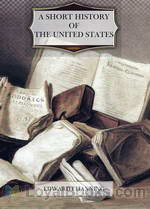 A Short History of the United States
A Short History of the United States
First published in 1908, A Short History of The United States by Edward Channing aims to provide a compact and concise account of the events that went into the making of the United States of America. Divided into 45 short chapters which are laid out point-wise, the book is designed as a school text book. Each chapter has a section at the end with a set of questions regarding the facts given in it. Beginning with theories about the first European who may have “discovered” the North American... | |
By: Edward Delafield (1794-1875) | |
|---|---|
 Inaugural Dissertation on Pulmonary Consumption
Inaugural Dissertation on Pulmonary Consumption
At a time when diseases termed "consumption" were among the leading cause of death in the county, physicians such as Edward Delafield began to publish observations, research, and studies on the topic. The hope of such works was to share gained knowledge with all physicians with faith that causes and treatments would be found to stop these devastating maladies. This is one such work. - Summary by afutterer | |
By: Edward Gibbon (1737-1794) | |
|---|---|
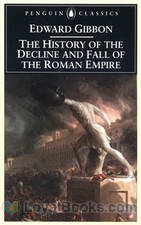 History of the Decline and Fall of the Roman Empire
History of the Decline and Fall of the Roman Empire
Spanning a period of nearly 1500 years, this monumental work of history tracks the orbit of one of the greatest Empires of all time. The sheer scale and sweep of the narrative is breathtaking in its ambitious scope and brings to vivid life the collapse of a magnificent military, political and administrative structure. Proceeding at a brisk pace, the original fourteen volumes describe debauched emperors, corrupt practices, usurpers and murderers, bloody battles, plunder and loot, barbarian hordes, tumultuous events like the Crusades and invaders like Genghis Khan and many more... | |
By: Edward Godfrey (1871-) | |
|---|---|
 Some Mooted Questions in Reinforced Concrete Design American Society of Civil Engineers, Transactions, Paper No. 1169, Volume LXX, Dec. 1910
Some Mooted Questions in Reinforced Concrete Design American Society of Civil Engineers, Transactions, Paper No. 1169, Volume LXX, Dec. 1910
| |
By: Edward H. (Edward Hammond) Clarke (1820-1877) | |
|---|---|
 Sex in Education or, A Fair Chance for Girls
Sex in Education or, A Fair Chance for Girls
| |
By: Edward Hayes (fl. 1580.) | |
|---|---|
 Sir Humphrey Gilbert's Voyage to Newfoundland
Sir Humphrey Gilbert's Voyage to Newfoundland
| |
By: Edward J. (Edward James) Wickson (1848-1923) | |
|---|---|
 One Thousand Questions in California Agriculture Answered
One Thousand Questions in California Agriculture Answered
| |
By: Edward J. (Edward John) Russell (1872-1965) | |
|---|---|
 Lessons on Soil
Lessons on Soil
| |
By: Edward J. Ruppelt (1923-1960) | |
|---|---|
 The Report on Unidentified Flying Objects
The Report on Unidentified Flying Objects
'Straight from the horse's mouth', as they say. Edward Ruppelt was the first head of the U.S. Air Force's Project Blue Book, the official project initiated to investigate UFO reports beginning in 1952. This report from 1956 takes us inside these initial investigations, separates fact from fiction, and gives insight into who, when, where, and how sightings were reported and researched in open-minded fashion (for which Ruppelt was renowned), rather than in the typical hushed and secretive (and censored) manner most often associated with government and military reports which are released to the public... | |
By: Edward Jesse (1780-1868) | |
|---|---|
 Anecdotes of Dogs
Anecdotes of Dogs
"Histories are more full of examples of the fidelity of dogs than of friends."The character, sensibilities, and intellectual faculties of animals have always been a favourite study, and they are, perhaps, more strongly developed in the dog than in any other quadruped, from the circumstance of his being the constant companion of man. I am aware how much has been written on this subject, but having accumulated many original and interesting anecdotes of this faithful animal, I have attempted to enlarge the general stock of information respecting it... | |
By: Edward Lambert | |
|---|---|
 The Art of Confectionary
The Art of Confectionary
| |
By: Edward Payson Roe (1838-1888) | |
|---|---|
 Success with Small Fruits
Success with Small Fruits
| |
By: Edward R. Shaw (1855-1903) | |
|---|---|
 Discoverers and Explorers
Discoverers and Explorers
Tales of the brave and daring explorers that ventured into the unknown “Sea of Darkness” where it was thought monsters and angry gods lived. They dared to sail near the equator which was thought to have such intense heat that it would boil the ocean water. It was also commonly thought at the time that the world was flat, and the ships would fall off the face of the earth. These men overcame these fears to explore and discover new lands. | |
By: Edward S. Ellis (1840-1916) | |
|---|---|
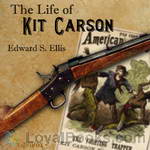 The Life of Kit Carson
The Life of Kit Carson
Christopher Carson, or as he was familiarly called, Kit Carson, was a man whose real worth was understood only by those with whom he was associated or who closely studied his character. He was more than hunter, trapper, guide, Indian agent and Colonel in the United States Army....His lot was cast on the extreme western frontier, where, when but a youth, he earned the respect of the tough and frequently lawless men with whom he came in contact. Integrity, bravery, loyalty to friends, marvelous quickness... | |
By: Edward Streeter (1891-1976) | |
|---|---|
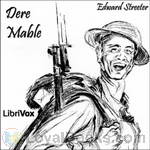 Dere Mable
Dere Mable
Bill is in training camp, preparing to go off to World War I. This book is a collection of love letters written to his sweetheart, Mable. The letters are humorous, mis-spelled, and have many stories of life in an army camp – all from Bill’s unique perspective. | |
By: Edward V. Lucas (1868-1938) | |
|---|---|
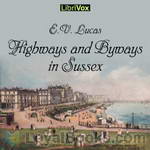 Highways and Byways in Sussex
Highways and Byways in Sussex
A very personal and opinionated wander through the Sussex of around 1900, illustrated with anecdotes, literary and poetic quotations, gravestone epitaphs and a gentle sense of humour. The author colours the countryside with his nostalgia for times past and regret for the encroaching future, his resentment of churches with locked doors, and his love of deer parks, ruined castles and the silent hills.(I must add my apologies for my attempts at the Sussex dialect in the chapter on that subject.)[This book is of Reading Grade of 9... | |
By: Edwin E. Slosson | |
|---|---|
 Creative Chemistry
Creative Chemistry
Slosson reviews the transformation of alchemistry from an obscure and imprecise practice to the science of chemistry. Along the way, he explains how the modern industrial world now relies on fertilizers, explosives, textile materials, polymers and metals.By exploring the properties of a once undervalued element, the high strength of vanadium steel made the Ford car possible. Another element, cerium, appears in butane lighters and was once seen as a threat to the match industry in France.In his chapter on oils, Slosson reviews the development of hydrogenated oils, especially during WWII, in the search for a way to reuse otherwise discarded components of corn and cottonseed... | |
By: Edwin F. Benson | |
|---|---|
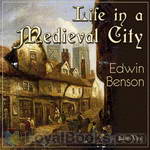 Life in a Mediaeval City, Illustrated by York in the XVth Century
Life in a Mediaeval City, Illustrated by York in the XVth Century
A short and gentle overview of mediaeval life in a large city. It lightly covers the class structure of society, local government, guilds, pageantry and punishment. The author has an easy, rhythmic style which leaves the reader wanting to find out more. | |
By: Elbridge Streeter Brooks (1846-1902) | |
|---|---|
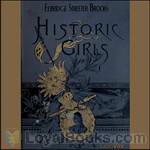 Historic Girls
Historic Girls
Twelve short stories of real girls who have influenced the history of their times. | |
By: Elinore Pruitt Stewart (1878-1933) | |
|---|---|
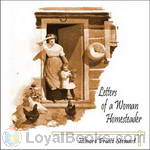 Letters of a Woman Homesteader
Letters of a Woman Homesteader
The writer of the following letters is a young woman who lost her husband in a railroad accident and went to Denver to seek support for herself and her two-year-old daughter, Jerrine. Turning her hand to the nearest work, she went out by the day as house-cleaner and laundress. Later, seeking to better herself, she accepted employment as a housekeeper for a well-to-do Scotch cattle-man, Mr. Stewart, who had taken up a quarter-section in Wyoming. The letters, written through several years to a former employer in Denver, tell the story of her new life in the new country... | |
By: Elisha Gray (1835-1901) | |
|---|---|
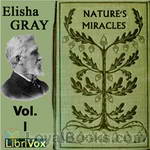 Nature's Miracles: Familiar Talks on Science
Nature's Miracles: Familiar Talks on Science
Elisha Gray (August 2, 1835 – January 21, 1901) was an American electrical engineer who co-founded the Western Electric Manufacturing Company. Gray is best known for his development of a telephone prototype in 1876 in Highland Park, Illinois and is considered by some writers to be the true inventor of the variable resistance telephone, despite losing out to Alexander Graham Bell for the telephone patent. | |
By: Eliza Armstrong | |
|---|---|
 Teacup Club (Dramatic Reading)
Teacup Club (Dramatic Reading)
The Teacup Club is formed when Dorothy decides to found an intellectual club of her own - to teach her fiance a lesson! The club’s discussion topics includes Theosophy, Politics and Women in Legislature. The club’s unofficial topics include Emily’s new dress, man-flu and the great mystery of the missing chafing-dish. A witty drama and a comedy of manners, secrets and politics . - Summary by Elizabby Cast List: Cast Narrator: Beth Thomas Evelyn: Jennifer Fournier Emily: Leanne Yau Dorothy: KHand Frances: Beth Thomas Elise: Lydia Marion: Vicki Hibbins Catharine: Michele Eaton Edited by: Michele Eaton and linny Proof listeners: Michele Eaton, Beth Thomas | |
By: Eliza Haywood | |
|---|---|
 History of Miss Betsy Thoughtless, Vol. 4
History of Miss Betsy Thoughtless, Vol. 4
Betsy Thoughtless is about an intelligent and strong-willed woman who marries under pressure from the society in which she lives. Betsy learns that sometimes giving way to the role of women within a marriage can at times be fulfilling. This is the fourth and final volume in this series. Does she get her man you will have to listen and find out. | |
By: Eliza Leslie (1787-1858) | |
|---|---|
 Directions for Cookery, in its Various Branches
Directions for Cookery, in its Various Branches
| |
 Seventy-Five Receipts for Pastry, Cakes and Sweetmeats, by Miss Leslie
Seventy-Five Receipts for Pastry, Cakes and Sweetmeats, by Miss Leslie
| |
By: Eliza P. Donner Houghton (1843-1922) | |
|---|---|
 The Expedition of the Donner Party and Its Tragic Fate
The Expedition of the Donner Party and Its Tragic Fate
The Donner Party was a group of California-bound American settlers caught up in the “westering fever” of the 1840s. After becoming snowbound in the Sierra Nevada in the winter of 1846–1847, some of the emigrants resorted to cannibalism. Although this aspect of the tragedy has become synonymous with the Donner Party in the popular imagination, it actually was a minor part of the episode. The author was about 4 at the time. The first part of the book accounts the tragic journey and rescue attempts; the last half are reminiscences of the child orphan, passed from family to family while growing up. | |
By: Elizabeth Blackwell (1821-1910) | |
|---|---|
 Pioneer Work in Opening the Medical Profession to Women
Pioneer Work in Opening the Medical Profession to Women
A fascinating account of the first woman to receive a medical degree in the United States. She writes of her struggles in being accepted to a medical school . She details her experiences while in the process of obtaining her degree, and her work both with patients and administratively, helping to found medical schools and hospitals for women. Summary by Phyllis Vincelli | |
By: Elizabeth Cady Stanton (1815-1902) | |
|---|---|
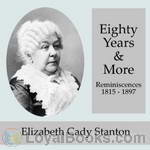 Eighty Years and More; Reminiscences 1815-1897
Eighty Years and More; Reminiscences 1815-1897
Elizabeth Cady Stanton was one of the premier movers in the original women’s rights movement, along with Susan B. Anthony, her best friend for over 50 years. While Elizabeth initially stayed home with her husband and many babies and wrote the speeches, Susan went on the road to bring the message of the women’s rights movement to an often hostile public. When black men were given the vote in 1870, Susan and Elizabeth led the women’s rights establishment of the time to withhold support for a bill that would extend to black men the rights still denied for women of all colors... | |
By: Elizabeth Davis Bancroft (1803-1886) | |
|---|---|
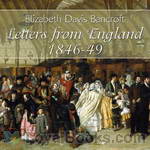 Letters from England, 1846-1849
Letters from England, 1846-1849
Elizabeth Bancroft went to England with her husband, historian George Bancroft, for three of the most dynamicy years in European hstory. As Ambassador to England from the United States, George moved in the highest circles. In his wife’s letters to their sons, her uncle, her brother, and Mrs. Polk (the President’s wife), we see glimpses not only of early Victorian English life, but also of Queen Victoria herself! Mrs. Bancroft speaks of dinners with Benjamin Disraeli, visits to Wordsworth, weekends in the country with Louis Napolean and Sir Robert Peel with such matter of fact aplomb that one cannot help being impressed. | |
By: Elizabeth E. Lea (1793-1858) | |
|---|---|
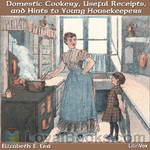 Domestic Cookery, Useful Receipts, and Hints to Young Housekeepers
Domestic Cookery, Useful Receipts, and Hints to Young Housekeepers
The compiler of [this book] having entered early in life upon a train of duties, was frequently embarrassed by her ignorance of domestic affairs. For, whilst receipt books for elegant preparations were often seen, those connected with the ordinary, but far more useful part of household duties, were not easily procured; thus situated, she applied to persons of experience, and embodied the information collected in a book, to which, since years have matured her judgment, she has added much that is the result of her own experiments... | |
By: Elizabeth Gaskell (1810-1865) | |
|---|---|
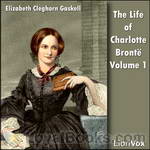 The Life Of Charlotte Brontë
The Life Of Charlotte Brontë
Charlotte Brontë was a British author, the eldest of the three famous Brontë sisters who have become standards of English literature. She is best known for her novel Jane Eyre, one of the greatest classics of all time. Just two years after Charlotte’s death, her friend Elizabeth Gaskell wrote her biography. Want to know more about Charlotte Brontë? If you do, please read this biography. | |
By: Elizabeth Keckley (1818-1907) | |
|---|---|
 Behind the Scenes
Behind the Scenes
This is the autobiography of Elizabeth Keckley, a former slave who bought her freedom with the money she earned as a seamstress. She eventually worked for Mary Lincoln. It is a fascinating book, filled with many recollections of her own life and her interactions with the Lincolns and other members of the government elite. | |
By: Elizabeth Moxon | |
|---|---|
 English Housewifery Exemplified in above Four Hundred and Fifty Receipts Giving Directions for most Parts of Cookery
English Housewifery Exemplified in above Four Hundred and Fifty Receipts Giving Directions for most Parts of Cookery
| |
By: Elizabeth Wormeley Latimer (1822-1904) | |
|---|---|
 France in the Nineteenth Century
France in the Nineteenth Century
Author Elizabeth Latimer synthesizes notes from a variety of sources to produce this summary of the nation of France in the 19th century. (Summary by Cathy Barratt) | |
By: Ellen Clacy | |
|---|---|
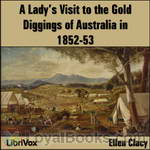 A Lady's Visit to the Gold Diggings of Australia in 1852-53,
A Lady's Visit to the Gold Diggings of Australia in 1852-53,
“If you have visions of a middle-aged parasol-bearing lady smiling sweetly from her carriage as she tours Bendigo think again. In 1852, 20 year old clergyman’s daughter Ellen and her brother boarded ship for Melbourne then set off to walk to Bendigo. Dressed in her blue serge skirt which doubled as nightwear, she camped under a tent made of blankets, had mutton, damper and tea most meals and on arrival lent her hand to gold washing. And seemed to enjoy it !And amongst other things she tells of colonial life , transportation, emigration and other gold-fields.But you will need to listen to hear more about bush-rangers and orphans as well as what she did with her parasol.” | |
By: Ellen Eddy Shaw | |
|---|---|
 The Library of Work and Play: Gardening and Farming.
The Library of Work and Play: Gardening and Farming.
| |
By: Ellen Key (1849-1926) | |
|---|---|
 The Education of the Child
The Education of the Child
| |
By: Ellery Clark Gregg (1899-) | |
|---|---|
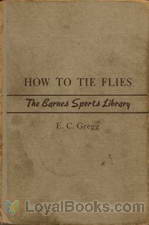 How to Tie Flies
How to Tie Flies
| |
By: Ellwood Patterson Cubberley (1868-1941) | |
|---|---|
 The History of Education; educational practice and progress considered as a phase of the development and spread of western civilization
The History of Education; educational practice and progress considered as a phase of the development and spread of western civilization
| |
By: Elsie Lincoln Benedict | |
|---|---|
 How to Analyze People on Sight Through the Science of Human Analysis: The Five Human Types
How to Analyze People on Sight Through the Science of Human Analysis: The Five Human Types
In this popular American book from the 1920s, accomplished public speaker and self-help charlatan Elsie Lincoln Benedict outlines her pseudo-scientific system of "Human Analysis". She proposes that, within the human race, five sub-types have developed through evolutionary processes, each with its own distinct character traits and corresponding outward appearance. She offers to teach the reader how to recognise these five types of people and understand their innate differences. Her ideas have never been taken seriously by the scientific community, but this book is considered a classic within its genre and remains in print today. Summary by Carl Manchester. | |
By: Emily Burbank (?-?) | |
|---|---|
 Woman as Decoration
Woman as Decoration
A guide for women to complement their dress to their surroundings, be it in their own home, on outings or on stage. Please note that there is a separate chapter with the captions of the fashion plates which can be found in the online text. | |
By: Emma Goldman (1869-1940) | |
|---|---|
 Anarchism and Other Essays
Anarchism and Other Essays
Chicago, May 4, 1886. In the Haymarket region of the city, a peaceful Labor Day demonstration suddenly turns into a riot. The police intervene to maintain peace, but they soon use violence to quell the mob and a bomb is thrown, resulting in death and injuries to scores of people. In the widely publicized trial that followed, eight anarchists were condemned to death or life imprisonment, convicted of conspiracy, though none of them had actually thrown the bomb. A young Russian immigrant, Emma Goldman, had arrived just the previous year in the United States... | |
By: Emmett J. Scott (1873-1957) | |
|---|---|
 Booker T. Washington Builder of a Civilization
Booker T. Washington Builder of a Civilization
| |
By: Enos A. Mills (1870-1922) | |
|---|---|
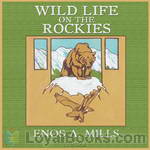 Wild Life on the Rockies
Wild Life on the Rockies
“This book contains the record of a few of the many happy days and novel experiences which I have had in the wilds. For more than twenty years it has been my good fortune to live most of the time with nature, on the mountains of the West. I have made scores of long exploring rambles over the mountains in every season of the year, a nature-lover charmed with the birds and the trees. On my later excursions I have gone alone and without firearms. During three succeeding winters, in which I was a Government Experiment Officer and called the “State Snow Observer,” I scaled many of the higher peaks of the Rockies and made many studies on the upper slopes of these mountains.” | |
By: Epictetus (c.55-135) | |
|---|---|
 The Golden Sayings of Epictetus
The Golden Sayings of Epictetus
Aphorisms from the Stoic Greek. | |
By: Ernest Gallaudet Draper (1885-1954) | |
|---|---|
 Lectures in Navigation
Lectures in Navigation
| |
By: Ernest Shackleton | |
|---|---|
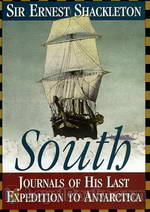 South! The Story of Shackleton's Last Expedition 1914-1917
South! The Story of Shackleton's Last Expedition 1914-1917
The expedition was given the grand title of The Imperial Trans-Antarctic Expedition. Due to be launched in 1914, two ships were to be employed. The first, the lead vessel, fittingly named the Endurance was to transport the team to the Weddell Sea from where the great explorer Ernest Shackleton and five others would cross the icy wastes of Antarctica on foot. The second ship, the Aurora was to approach the continent from the other side and put down supplies at various points to help the explorers... | |
By: Ernst Heinrich Philipp August Haeckel (1834-1919) | |
|---|---|
 Freedom in Science and Teaching. from the German of Ernst Haeckel
Freedom in Science and Teaching. from the German of Ernst Haeckel
| |
By: Estelle M. Hurll (1863-1924) | |
|---|---|
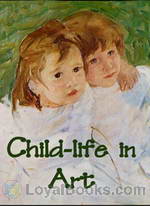 Child-life in Art
Child-life in Art
The poetry of childhood is full of attractiveness to the artist, and many and varied are the forms in which he interprets it. The Christ-child has been his highest ideal. All that human imagination could conceive of innocence and purity and divine loveliness has been shown forth in the delineation of the Babe of Bethlehem. The influence of such art has made itself felt upon all child pictures. It matters not whether the subject be a prince or a street-waif; the true artist sees in him something which is lovable and winning, and transfers it to his canvas for our lasting pleasure. | |
By: Ethel Hueston (1887-1971) | |
|---|---|
 Leave it to Doris
Leave it to Doris
The Reverend Mr. Artman is a widower of three years and is worried he might not be able to escape the clutches of Miss Carlton, his housekeeper, much longer. Luckily, if he dismisses her from his employ, he has Doris and three other daughters to run his household. | |
By: Ethel M. Mairet | |
|---|---|
 Vegetable Dyes Being a Book of Recipes and Other Information Useful to the Dyer
Vegetable Dyes Being a Book of Recipes and Other Information Useful to the Dyer
| |
By: Ethel Rose Peyser (1887-1961) | |
|---|---|
 Cheating the Junk-Pile — The Purchase and Maintenance of Household Equipments
Cheating the Junk-Pile — The Purchase and Maintenance of Household Equipments
This book of advice about the purchase and care of household appliances is intended to cheat the junk-pile by inspiring the buyer to get the utmost advantage out of every purchase thru wise buying and proper care of equipment after it is acquired. The book explains what the householder needs to know about the practical home use of electricity, about such modern appliances as electric washing machines and vacuum cleaners., about electric, gas, and oil stoves, heating and ventilation, kitchen furnishings, water supply, lighting, fire prevention, etc. - Summary by Book review digest, 1923 | |